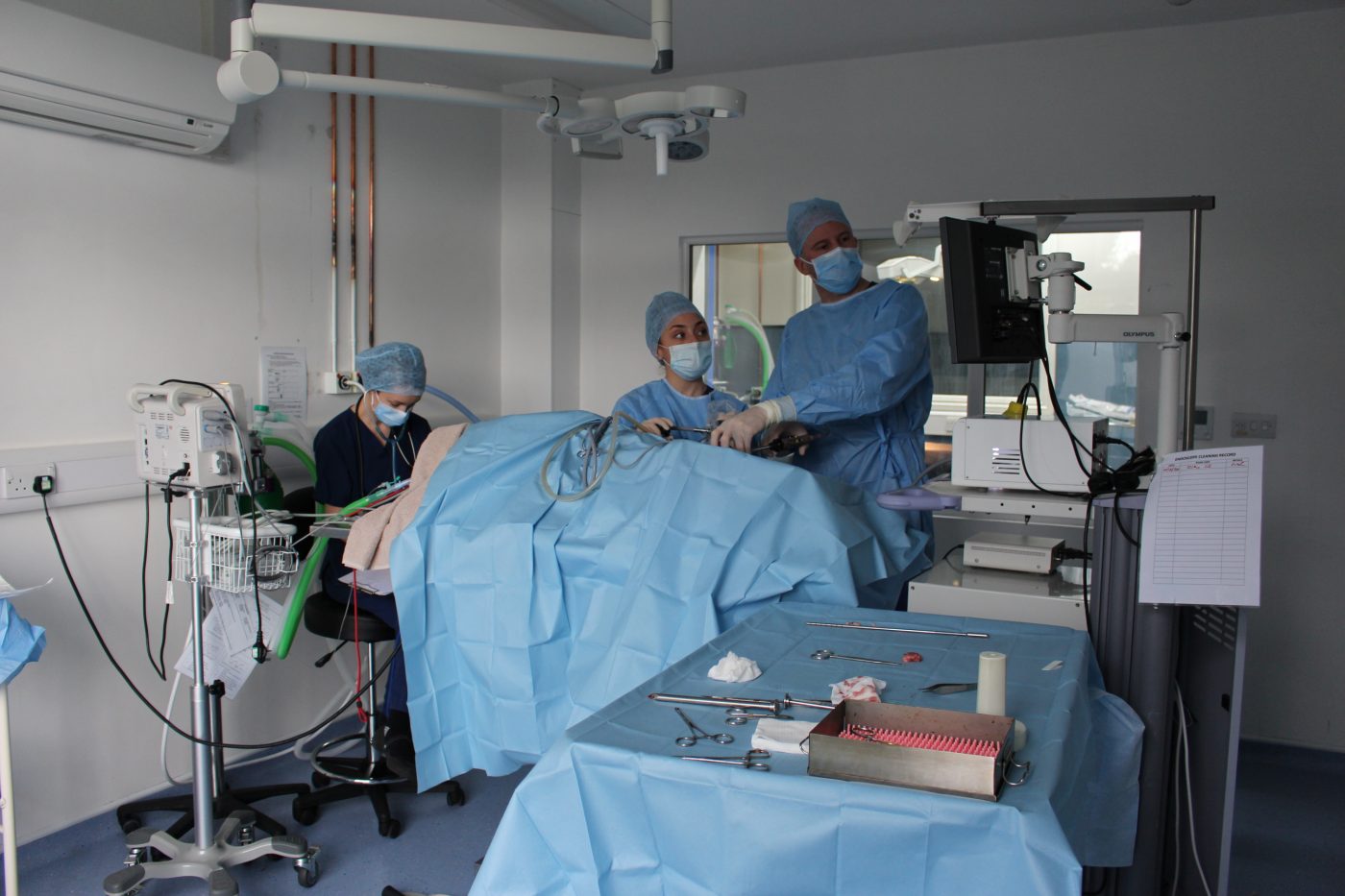Laparoscopic surgery at Meopham Veterinary Hospital and Sevenoaks Veterinary Surgery.
Download our Lap Spay leaflet hereWe are very proud to provide laparoscopic, (also known as ‘Keyhole’) surgery at The Meopham Veterinary Hospital and Sevenoaks Veterinary Surgery.
Laparoscopic surgery is abdominal surgery performed through very small incisions in the abdomen. In human medicine laparoscopic surgery has been the routine for decades because study after study has shown that it provides huge advantages for patients. In veterinary medicine this technique is becoming increasingly popular for the same reasons.
The most commonly performed procedure is the ‘key hole’ bitch spay. Three small (1cm) incisions are made in the abdomen and a laparoscope (long thin camera) is passed through one of these incisions giving the surgeon a magnified view of all the internal structures of the abdomen displayed on a TV screen. The ovaries and uterus are located and then the ovaries are removed one by one whilst still being inside the abdomen, using a vessel sealing device to prevent bleeding. This is an ovariectomy.
This technique eliminates the need to make a larger abdominal incision and the handling of tissues in the abdomen is very minimal which causes less discomfort to the bitch compared to the traditional method of spaying. It also gives the surgeon a better view of the abdomen allowing greater precision and fewer complications. The overall result is less trauma for the patient and a faster recovery. More and more owners are opting to have their dogs neutered in this way as they recognise the benefits to their pet.
The main advantages of the laparoscopic technique are:
- Reduced post-operative pain – a lot of the pain related to spaying is due to the handling of the uterus. As this remains inside the abdomen during keyhole surgery then post-operative pain is reduced.
- Faster recovery – patients can generally get back to normal activity a lot quicker than with the traditional spay mainly due to the small incision size.
- Smaller wound size – This means dogs usually recover quicker and experience less irritation and discomfort as there is a smaller wound and less suture material. This in turn means wound closure complications are reduced.
- Better visualisation of the surgical field – the surgical area is magnified by the camera giving the surgeon an enhanced view of the surgical area. This improves the procedure safety.
The benefits of laparoscopic spaying are more keenly felt by medium to large breed dogs and generally speaking dogs weighing less than 10kg are probably still best spayed using the traditional method. However, this decision is made on a case by case basis. We would strongly encourage the laparoscopic spay technique for dogs over 25kgs. It is important to remember we can use laparoscopic techniques for other procedures such as cryptorchid (only one descended testicle) castrates, liver biopsies and laparoscopic assisted gastropexy.
The procedure involves your dog being admitted in the morning and being discharged later on the same day.
Ultimately how your dog is spayed is your choice and you have to consider many different factors. The cost of laparoscopic spaying is higher than traditional spaying due to the specialised equipment used and this obviously needs to be taken into account when you make the decision.
If you have any further questions regarding laparoscopic neutering then please do not hesitate in contacting a member of the team.
To view our video about the process of laparoscopic spays please click the link below.
Laparoscopic Spay VideoWe accept patients for this procedure on an outpatient basis as a fixed price procedure. For further information please contact us on referrals@meophamvets.co.uk










